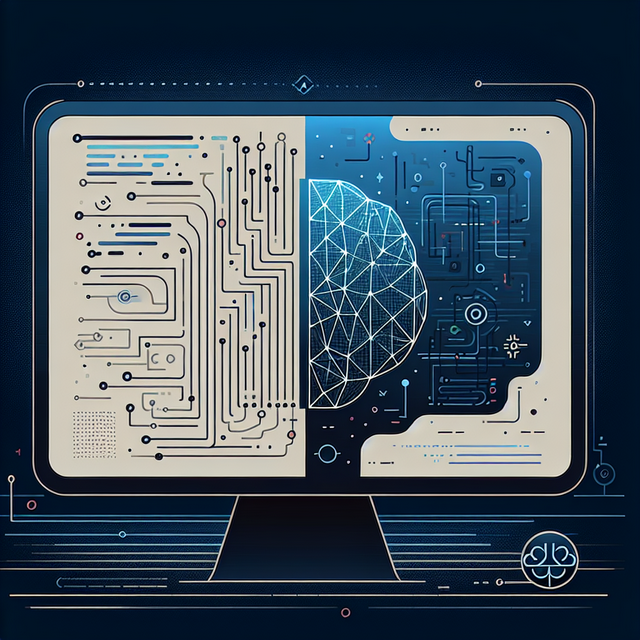
AI Code Refactoring: Modernizing Enterprise Software
In the rapidly evolving landscape of enterprise software development, the challenge of modernizing legacy systems has become more pressing than ever. Enter AI code refactoring – a game-changing approach that’s revolutionizing how businesses update and optimize their software infrastructure. This article delves into the transformative power of AI-driven code refactoring and its impact on enterprise software modernization.
Table of Contents
- Understanding AI Code Refactoring
- The Need for Enterprise Software Modernization
- How AI Code Refactoring Works
- Benefits of AI-Driven Code Refactoring
- Challenges and Considerations
- Real-World Applications
- The Future of AI in Software Modernization
Understanding AI Code Refactoring
AI code refactoring leverages artificial intelligence and machine learning algorithms to analyze, optimize, and restructure existing codebases. This innovative approach goes beyond traditional manual refactoring methods, offering a more efficient and comprehensive solution for modernizing legacy systems.
The Need for Enterprise Software Modernization
Many organizations grapple with outdated software systems that hinder productivity and innovation. Legacy systems often:
- Lack compatibility with modern technologies
- Pose security risks due to outdated frameworks
- Require significant maintenance efforts
- Impede the adoption of new features and functionalities
Modernizing these systems is crucial for businesses to remain competitive and agile in today’s fast-paced digital environment.
How AI Code Refactoring Works
AI-driven code refactoring typically involves the following steps:
- Code Analysis: AI algorithms scan the existing codebase, identifying patterns, dependencies, and potential areas for improvement.
- Optimization Suggestions: Based on the analysis, the AI suggests refactoring opportunities, ranging from simple syntax improvements to complex architectural changes.
- Automated Refactoring: For certain types of optimizations, the AI can automatically implement changes, significantly reducing manual effort.
- Quality Assurance: AI tools can run tests to ensure that the refactored code maintains its original functionality while improving performance and readability.
Before and After Comparison of AI-Refactored Code Snippets
To illustrate the power of AI code refactoring, let’s look at a before and after example:
Before Refactoring:
def calculate_total(items):
total = 0
for item in items:
total = total + item.price
return total
After AI Refactoring:
def calculate_total(items):
return sum(item.price for item in items)
This simple example demonstrates how AI can transform verbose code into more concise and efficient implementations, improving readability and performance.
Benefits of AI-Driven Code Refactoring
Implementing AI code refactoring in enterprise software modernization offers numerous advantages:
- Increased Efficiency: AI can process large codebases much faster than human developers, accelerating the modernization process.
- Improved Code Quality: AI-driven refactoring often results in cleaner, more maintainable code structures.
- Cost Reduction: By automating much of the refactoring process, organizations can significantly reduce the time and resources required for modernization projects.
- Enhanced Security: AI can identify and address potential security vulnerabilities during the refactoring process.
- Scalability: AI tools can handle projects of any size, from small applications to large enterprise systems.
Challenges and Considerations
While AI code refactoring offers significant benefits, it’s important to consider potential challenges:
- Complexity of Legacy Systems: Some older systems may be too complex or poorly documented for AI to fully understand and refactor effectively.
- Integration Issues: Refactored code may need careful integration with existing systems and processes.
- Team Adoption: Developers and managers need to adapt to new AI-driven workflows and tools.
- Quality Assurance: Thorough testing is crucial to ensure that refactored code maintains its original functionality.
Real-World Applications
AI code refactoring is making waves across various industries:
- Banking: Financial institutions are using AI to modernize core banking systems, improving security and enabling faster innovation.
- Healthcare: AI-driven refactoring is helping healthcare providers update patient management systems, enhancing data integration and compliance with regulatory standards.
- E-commerce: Online retailers are leveraging AI to optimize their platform’s codebase, improving performance and user experience.
The Future of AI in Software Modernization
As AI technologies continue to advance, we can expect even more sophisticated code refactoring capabilities. Future developments may include:
- More accurate prediction of refactoring impacts on system performance
- Enhanced natural language processing for better code understanding
- Deeper integration with DevOps practices for continuous modernization
AI Code Metrics is at the forefront of this revolution, offering an AI Development Intelligence platform that empowers organizations to optimize their AI-assisted software development processes. By providing tools for AI code analysis, optimization, and strategic impact measurement, AI Code Metrics is helping businesses navigate the complexities of AI-driven software modernization.
In conclusion, AI code refactoring is transforming the landscape of enterprise software modernization. By leveraging the power of artificial intelligence, organizations can more efficiently update their legacy systems, improve code quality, and stay competitive in an increasingly digital world. As we move forward, the integration of AI in software development and modernization will undoubtedly play a crucial role in shaping the future of enterprise technology.
Are you ready to revolutionize your approach to software modernization? Explore how AI Code Metrics can help you harness the power of AI-driven code refactoring and take your enterprise software to the next level.